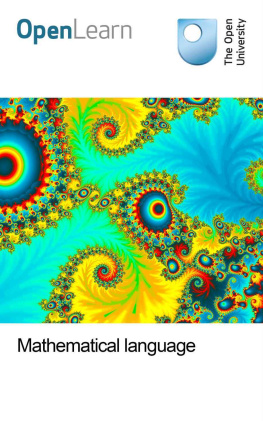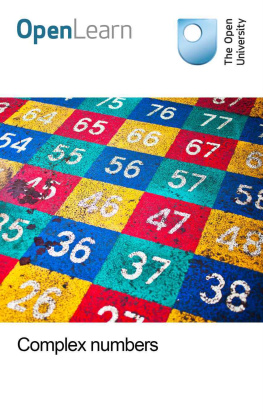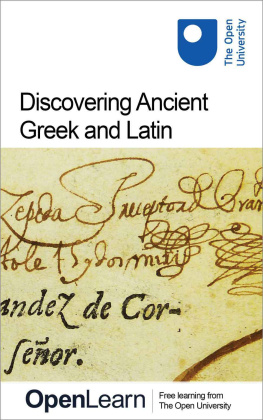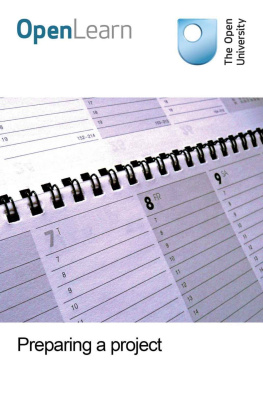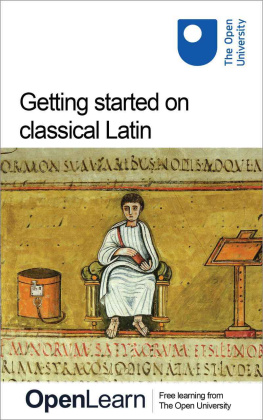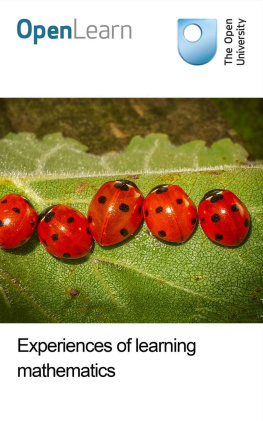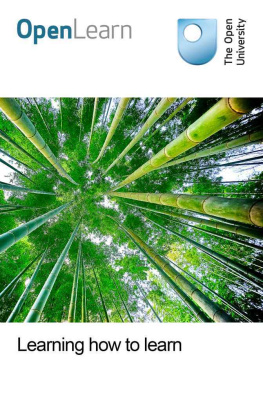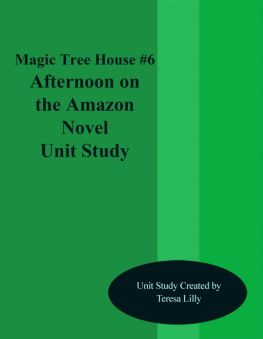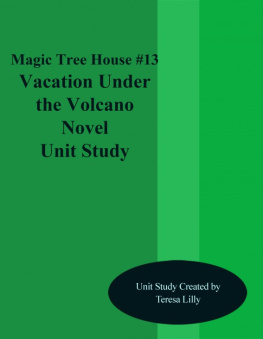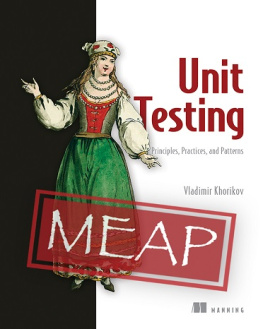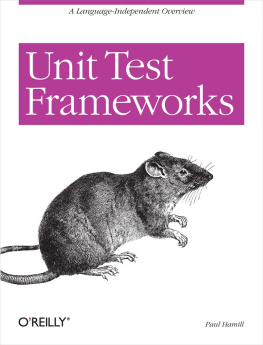M208_5Pure mathematics
Mathematical language
About this free course
This free course is an adapted extract from the Open Unviersity course M208: Pure Mathematics www3.open.ac.uk/study/undergraduate/course/m208.htm
This version of the content may include video, images and interactive content that may not be optimised for your device.
You can experience this free course as it was originally designed on OpenLearn, the home of free learning from The Open University: www.open.edu/openlearn/science-maths-technology/mathematics-and-statistics/mathematics/mathematical-language/content-section-0.
There youll also be able to track your progress via your activity record, which you can use to demonstrate your learning.
The Open University, Walton Hall, Milton Keynes, MK7 6AA
Copyright 2016 The Open University
Intellectual property
Unless otherwise stated, this resource is released under the terms of the Creative Commons Licence v4.0 http://creativecommons.org/licenses/by-nc-sa/4.0/deed.en_GB. Within that The Open University interprets this licence in the following way: www.open.edu/openlearn/about-openlearn/frequently-asked-questions-on-openlearn. Copyright and rights falling outside the terms of the Creative Commons Licence are retained or controlled by The Open University. Please read the full text before using any of the content.
We believe the primary barrier to accessing high-quality educational experiences is cost, which is why we aim to publish as much free content as possible under an open licence. If it proves difficult to release content under our preferred Creative Commons licence (e.g. because we cant afford or gain the clearances or find suitable alternatives), we will still release the materials for free under a personal end-user licence.
This is because the learning experience will always be the same high quality offering and that should always be seen as positive even if at times the licensing is different to Creative Commons.
When using the content you must attribute us (The Open University) (the OU) and any identified author in accordance with the terms of the Creative Commons Licence.
The Acknowledgements section is used to list, amongst other things, third party (Proprietary), licensed content which is not subject to Creative Commons licensing. Proprietary content must be used (retained) intact and in context to the content at all times.
The Acknowledgements section is also used to bring to your attention any other Special Restrictions which may apply to the content. For example there may be times when the Creative Commons Non-Commercial Sharealike licence does not apply to any of the content even if owned by us (The Open University). In these instances, unless stated otherwise, the content may be used for personal and non-commercial use.
We have also identified as Proprietary other material included in the content which is not subject to Creative Commons Licence. These are OU logos, trading names and may extend to certain photographic and video images and sound recordings and any other material as may be brought to your attention.
Unauthorised use of any of the content may constitute a breach of the terms and conditions and/or intellectual property laws.
We reserve the right to alter, amend or bring to an end any terms and conditions provided here without notice.
All rights falling outside the terms of the Creative Commons licence are retained or controlled by The Open University.
Head of Intellectual Property, The Open University
Designed and edited by The Open University
978-1-4730-1382-7 (.kdl)
978-1-4730-0614-0 (.epub)
Contents
Introduction
When we try to use ordinary language to explore mathematics, the words involved may not have a precise meaning, or may have more than one meaning. Many words have meanings that evolve as people adapt their understanding of them to accord with new experiences and new ideas. At any given time, one person's interpretation of language may differ from another person's interpretation, and this can lead to misunderstandings and confusion.
In mathematics we try to avoid these difficulties by expressing our thoughts in terms of well-defined mathematical objects. These objects can be anything from numbers and geometrical shapes to more complicated objects, usually constructed from numbers, points and functions. We discuss these objects using precise language which should be interpreted in the same way by everyone. In this course we introduce the basic mathematical language needed to express a range of mathematical concepts.
Please note that this course is presented through a series of downloadable PDF files.
This OpenLearn course is an adapted extract from the Open Unviersity course M208: Pure Mathematics
Learning outcomes
After studying this course, you should be able to:
- determine whether two given sets are equal and whether one given set is a subset of another
- find the union, intersection and difference of two given sets
- determine the image of a given function
- determine whether a given function is one-one and/or onto.
1 Sets
In Section 1 we discuss the idea of a set and describe some ways to define sets. We illustrate our discussion with sets of numbers and with geometrical sets of points in the plane. We also explain how to check whether two given sets are equal and whether one set is a subset of another. Finally, we introduce the set operations of union, intersection and difference.
Click the link below to open Section 1 (16 pages, 389KB).
Section 1
2 Functions
In Section 2 we give the general definition of a function, and illustrate how functions can be used to describe a variety of mathematical concepts, such as transformations of the plane. We discuss the idea of composing two functions, and the idea of forming the inverse of a function.
Click the link below to open Section 2 (16 pages, 366KB).
Section 2
3 The language of proof
In Section 3 we examine the language used to express mathematical statements and proofs, and discuss various techniques for proving that a mathematical statement is true. These techniques include direct proof, proof by mathematical induction, proof by contradiction and proof by contraposition. We also illustrate the use of counter-examples to show that a statement is false.
Click the link below to open Section 3 (17 pages, 374KB).
Section 3
4 Two identities
Section 4 introduces some important mathematical theorems.
Click the link below to open Section 4 (7 pages, 237KB).
Section 4
5 Solutions to the exercises
Section 5 contains solutions to the exercises that appear throughout sections 1-4.
Click the link below to open the solutions (13 pages, 500KB).
Section 5
Conclusion
This free course provided an introduction to studying Mathematics. It took you through a series of exercises designed to develop your approach to study and learning at a distance and helped to improve your confidence as an independent learner.
Study another free course

